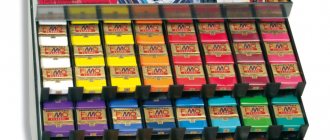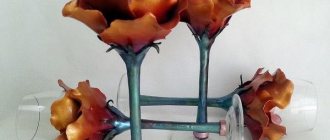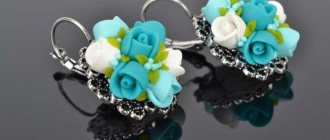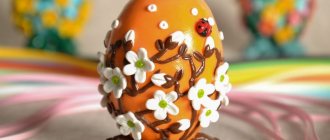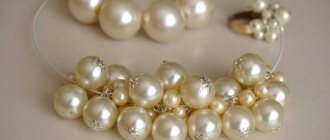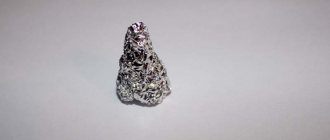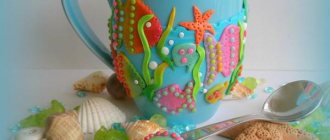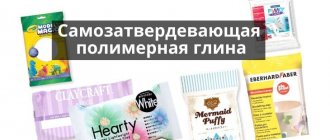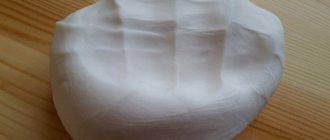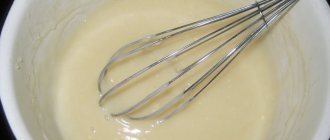What is modeling clay
This substance is used by children and adults for creative purposes, for example, to model complex figures. Initially, it is a mineral that appears as a result of rock erosion. Wind and water contribute to weathering and washing away dry dusty matter from the rocks. A one-color mass suitable for modeling is extracted from the ground. To become fit for work, she goes a long way:
- First, it is dried, crushed and filled with water.
- Then the mass is mixed, settled, filtered, dried and kneaded.
- The material must be brought to a dough-like state.
Kinds
There are many types of clay from which you can create certain products. It can be self-hardening and intended for firing. Specialized stores sell evacuated mass, products from which will last a long time, since air is sucked out of the material using modern technological equipment. Natural ceramic raw materials are not inferior in popularity. Reusable clay-plasticine is intended for children and beginners in modeling; the material is especially valued for making porcelain tableware.
Polymer clay for modeling
This is a well-known material for applied creativity, allowing you to create decorative items, dolls, decorative items, and gifts even at home. Polymer clay is produced mainly abroad. Those who deal with modeling know many of its varieties, differing in consistency, texture, flexibility, color and other characteristics. Here are some of its types with different properties: “Fimo classic”, “Fimo soft”, “Craft&Clay”, “Sculpey”, “Artifact”, “Fantaser”, “Koh-i-Noor”, “Cernit”, “Fleur”. Let's find out more about them.
Self-hardening
We are talking about a modeling material that hardens in the open air over a certain number of hours or days. This process does not require any special conditions. The larger the size of the figurine, the longer it will take to dry - the products harden no more than a centimeter per day. Self-hardening polymer clay is most suitable for making flat figures. It is important to store it so that air does not penetrate into the packaging - otherwise the material will harden, and then you will not be able to use it.
The polymer mass “Fleur” is classified as cold porcelain. The material is designed for crafts with fine details in the field of ceramic floristry. This type of plastic can be easily rolled out into thin petals and insect wings. Consider this type of clay:
- Title: "Fleur".
- Price: a bar weighing 200 g costs from 404 to 475 rubles, you can order, for example, by mail.
- Characteristics: Thin products made from this material remain flexible and durable. The white elastic mass hardens in air. To give it color, you need to mix in oil paints. To work with the material, you need to know the basics of painting, floristry and sculpture. Opened modeling clay should be stored in a package well wrapped with special film.
- Pros: Flexibility, transparency, high quality, ability to create fine details.
- Disadvantages: when drying, the figure darkens greatly, so you should mix a small amount of paint. During sculpting, the material may begin to harden - in this case, you will have to mix a little latex glue.
“Fantaser” is a Russian-made modeling mass containing purified red clay powder. It is harmless to health, the products are designed to develop children's creativity. More about her:
- Title: "Dreamer".
- Price: a box weighing 340 g costs from 150 to 200 rubles.
- Characteristics: homogeneous mass, plastic, soft, does not require firing. This type of plastic is used for sculpture and pottery. It hardens within 24 hours in air. The material is suitable for making figurines, household items, and decorations. This is polymer clay for beginners.
- Pros: kneads easily, products are durable, dry well, harden quickly.
- Cons: the mass hardens if storage conditions are violated. No significant deficiencies in the work were noticed.
The self-hardening polymer mass of the Czech production “Koh-i-Noor” is created on the basis of natural clay. Suitable for creativity at any age. The plastic is available in plain white and terracotta colors and hardens within 24 hours. Detailed Product Information:
- Title: "Koh-i-Noor".
- Price: packaging weighing 300 g is sold on the Internet at prices ranging from 169 to 218 rubles.
- Characteristics: Recommended for use by children aged three years and older. Used for sculpting decorations, sculptures, and jewelry. Doesn't stick to your hands, you should wet your hands with water before working. Hardening occurs quickly. For example, a figurine 2 cm thick dries within a day. It is recommended to process it after drying and hardening.
- Pros: soft, plastic, vacuum-sealed mass, not harmful to health.
- Disadvantages: the material is not moisture-resistant, cracks, crumbles, products are fragile after drying, it is difficult to sculpt small parts from it.
Baked
Clay intended for heat treatment is durable and hard. It is used in pottery, creating sculptures and dishes. Today, many types of baked clay are known, suitable for certain types of work. They consist of a base and a plasticizer, which imparts plastic properties. Let's look at some types in more detail.
- What causes warts - symptoms and causes. Why warts appear, video
- Hydrogen peroxide to treat acne and blemishes
- Preparation for ultrasound of the abdominal organs
"Fimo classic" is a product of the Staedtler brand, a variation of the popular thermoplastic grade. The manufacturer presented it in 24 colors. Ideal for creating products - decorative elements, jewelry, segments for bracelets, pendants, figurines. Details about "Fimo":
- Name: "Fimo classic".
- The price of ordering on the Internet is 115 rubles for a package weighing 57 grams, 604 rubles for 350 grams.
- Characteristics: the material is hard and durable, becomes soft after thorough kneading, it is not difficult to produce small particles and parts. The material is divided into equal segments to make it convenient to separate a piece from a briquette. Products made from this modeling clay require heat treatment at temperatures up to 110°C for 30 minutes. Unfired products will be brittle and weak. The duration of firing depends on the thickness and size of the figurine. Crafts that have undergone this procedure, for example, jewelry, jewelry, become durable. They need to be polished and painted.
- Pros: decorative elements made from this type of plastic are more durable than those made from other lines of clay. The contours of a product made from Fimo classic are easy to make clear and neat.
- Cons: The material is a bit difficult to work with as it requires time and effort to make it flexible.
“Fimo soft” is an easy-to-use material. The manufacturer created an original multi-color palette of 24 colors. This type of thermoplastic complements the classic version. The product is used by adults, those who are starting to sculpt, and children. Detailed information:
- Name: "Fimo soft".
- Price: a package weighing 57 g in St. Petersburg costs 176 rubles, and 350 g costs 924 rubles.
- Characteristics: this type of plastic is more in demand than the classic one, since its substance is softer. After heat treatment, the product becomes hard. Baking temperature – 110°C for 20–30 minutes. The time depends on the thickness of the clay layer.
- Pros: soft and smooth, suitable for both beginners and craftsmen. The material is ready for use.
- Disadvantages: it is difficult to achieve clarity in creating the contours of small elements of a particular figurine, your hands get dirty, and the products are fragile.
Polyform Products products, known under the general brand Sculpey, are one of the most durable types of plastic. A series of products have been developed - both soft and hard (in separate lines). This company produces plastic for firing and plastic mass for children's creativity. Detailed information:
- Title: "Sculpey".
- Cost: a block weighing 57 g - from 172 to 196 rubles, you can buy modeling clay with delivery in Moscow in the online store.
- Characteristics: suitable for creating elements of costume jewelry, interior decoration, mosaics. With the help of plastic it is easy to emphasize the fine detail of the relief and surface texture of the product. The palette is composed in classic colors for artists. After heat treatment at a temperature of 130°C, the product can be sanded, painted and varnished.
- Pros: durable, soft, can be mixed to create new shades.
- Cons: there are few translucent shades in the palette; due to its fragility, it is not recommended to create small details using Sculpey Premo.
Artifact and Craft&Clay (Russia)
Clay Artifact came to replace the Sonnet line from the same manufacturer. In addition, under the Craft & Clay brand, Artifact LLC produces polymer clay in 52 g bars. Its properties are almost similar to those of Artifact 56 g, while the selling price is usually slightly higher for a smaller volume.
Advantages
+ easy to buy – available at most craft and craft stores
+ cost, one of the most budgetary on the Russian market
+ Sonnet had (and partially remained with Artifact) a beautiful line of neon (fluorescent colors)
+ manufacturers are constantly working to improve the formula and perhaps Artifact over time will not be inferior to foreign analogues
Flaws
- soft and sticky, quickly heats up in your hands and begins to “flow”, sticks to your fingers, not suitable for complex work with thin elements
— it’s not easy to choose the optimal baking mode; if the temperature/time is slightly exceeded, the product immediately changes color (turns yellow, darkens), insufficient baking temperature/time leads to fragility of parts,
- the color can change (fade, fade) in finished products, this can happen in a month, or maybe after a few years, depending on the specific shade used, and dark and saturated pigments easily migrate to neighboring colors
— in general, clay is less durable than foreign analogues
How to choose clay for modeling
Every craftsman, potter, sculptor and amateur prefers one or another type of clay for modeling. Those who want to develop and earn money are not lazy in trying new techniques and working methods; they use different ceramic masses, polymers, and gypsum. Although choosing the best option is not easy, many craftsmen work with one or two brands of clay.
To decide on the choice of clay brand, study the offers of different stores on the Internet. Adviсe:
- Read about the companies that produce clay, choose the option that suits its quality, price, properties, purpose (for beginners, masters).
- Look carefully at the manufacturing date of the product on the packaging. The container must be undamaged and not expired, otherwise you will not be able to fashion anything from it.
- Choose the appropriate color of clay or paint to make the product look good.
- Sets of branded raw materials and tools are sold online.
- Please be aware of the security of your personal information when making purchases and sales transactions.
For beginners
Modeling paste is used to create decorative items. We are talking about polymer clay. The characteristics of each type differ in such properties as:
- viscosity;
- hardness;
- elasticity;
- plastic;
- grain;
- strength.
Based on the hardening method, the following types of plastic are distinguished:
- Self-hardening, it is used to create figurines, toys, figurines, parts of dolls, small parts (“Fantaser”, “Koh-i-Noor”, “Fleur”, “Craft & Clay”).
- When baked, it becomes hard and durable after heat treatment at a temperature of 100–130°C (“Fimo classic”, “Fimo soft”, “Sculpey”).
Artistic clay
When choosing a product, you should take into account its characteristics so that the material is suitable in quality and texture. Well-known brands of products for artwork and sculpture: Super Sculpey, Modena, Modern, Zumaia, PVG, Prai, Craft&clay, Pram. Another option - real pottery mass - is used to create interior items. It is purchased in handicraft stores and hobby shops, often not labeled, and there are no products of popular brands on sale. This clay should be:
- severe;
- fat;
- pliable;
- elastic;
- without fireclay;
- capable of maintaining a given shape.
The main points of the process of baking plastic in an oven
For professionals working with thermoplastics, baking is a common everyday process. But beginners need to sort everything out.
And therefore it is necessary to note the main points of the baking process, which are as follows:
- The product or its parts must be prepared in advance;
- You can lay out the parts on a wooden, ceramic, glass surface or baking sheet. Regarding the latter, it should not have a non-stick coating, since the product will start to burn due to its rapid heating. In addition, the baking sheet should be covered with paper or foil;
- The baking temperature should be set only in accordance with the clay manufacturer’s instructions. It is worth noting that many manufacturers have a temperature range of either 110 or 130 degrees;
- Crafts should only be placed in a preheated oven;
- Bake the clay according to the time depending on the thickness of the product. In this case, the maximum thickness should not be more than 1 cm. Baking time can vary from 5-10 minutes for thin parts, and 20-40 minutes for thick elements;
- After the baking time is complete, remove the product, wait for it to cool and check for doneness.
If all the points are met, then the finished product after baking will become durable, but slightly flexible. It will not lose shape or fade.
It is also worth noting that you can use the stove only in a well-ventilated place, so that when removing the product you do not inhale harmful polymer fumes, or use a baking sleeve.
Therefore, it is worth paying special attention to safety precautions when working with baked polymer plastic.
